|
Season 2 • Episode 12 - June 26, 2023
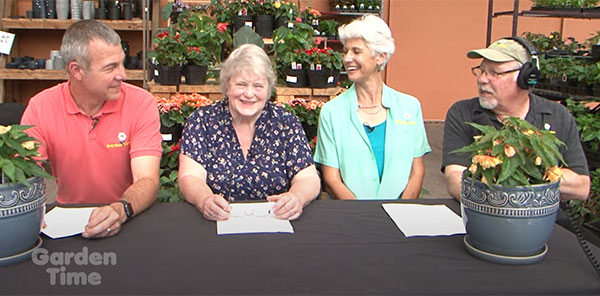
June marks the beginning of summer
and things in the garden are heating up, and I’m not
just talking temperature! After the bright beautiful
colors of spring have faded you might be seeing a few
plant problems and have concerns about what to do to
address those problems. As always, we turn to our
friend, retired Oregon State University Extension Agent
Jan McNeilan to get some tips on working in the early
summer garden.
Jan met us at the
Portland Nursery location on Stark Street in
Portland. We were surrounded by great plants and eager
summer shoppers, many of them listening in as we
recorded the podcast.
The first tip that Jan offered was deadheading your
rhododendrons. Yes, you can, but do it soon. Deadheading
is the removal of the dead blooms. You can do that now
but know that the plant will start setting buds in mid
to late summer for the blooms for next year. You can
also do some hard pruning to get your plants into a
manageable shape, but those hard cuts will cause the
plant to go without blooms for a year or two. The best
time to deadhead your rhodies and lilacs is right after
they bloom. In fact, that is true for most of your
spring blooming perennials. Cutting them back, while it
probably won't the plants, can cause them to grow an
extra season or two before the blooms return. You can
also fertilize when you see new growth on your plant. If
you do fertilize, make sure that you give the plant a
good watering and work the fertilizer into the soil to
help release that fertilizer to the plant. Avoid
fertilizing and pruning during extreme heat so you don’t
stress out your plant. Another way to help your plants
during the summer is to add mulch to your garden beds. A
good layer of garden mulch will protect the plant by
holding in the moisture, provide a nutritional boost to
the plant and help with weed suppression. Jan did give
us a tip on how to mulch. Make sure your mulch is not
piled up around the base of the plant. If it is too
thick it can block the water from reaching the root zone
of the plant.
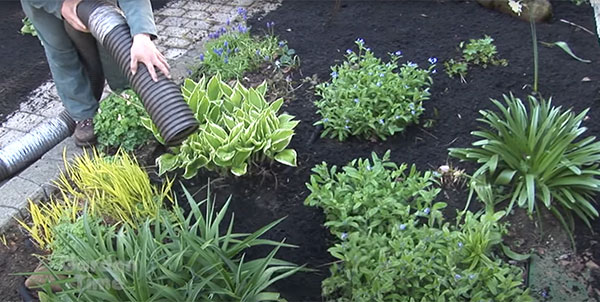
Judy brought up strawberries next. What should you do
with your strawberries once they are done fruiting?
Right now you can clean up the dead and dying leaves.
You can also cut the runners and replant the little
plants that are attached to the runners back into your
strawberry bed. In late August you can cut back all the
foliage on the plants and fertilize them in anticipation
for the fall and winter. All this talk about
strawberries had Ryan bring up another question. Is it
too late to plant some of your fall fruiting veggies?
Jan, mentioned that last year she planted her tomatoes
on June 22nd and she still had tomatoes by the fall.
Yes, you can get some of those crops in the ground,
though it will speed things up if you get plants from
your local garden center and not start them from seed.
The summer heat and even watering will help those
‘late-bloomers’ catch up and fruit before you know it.
We also talked about planting your fall cole crops
(broccoli, cabbage, cauliflower and kale) in mid- to
late July for a bountiful fall and winter harvest. Ryan
talked about succession planting with onions in his
garden. He planted onions earlier and now he is planting
them again, a few weeks later. This allows him to
harvest onions at two different times instead of one big
crop all at once. You can do this with lots of your
garden vegetables. If you are looking for seeds, pick
those varieties that are ‘short season’ varieties. They
will mature quicker and you can enjoy two or more
harvests before winter.
The next topic was lawns. In the summer, long, green
lawns are the goal of many homeowners, but many get
discouraged when their lawns turn brown during the
summer heat. Jan wanted to let them know that the lawn
is not dead from the summer heat. The grass just goes
dormant. It will return to green when the fall rains
return. The only problem is with weeds in the dormant
lawn. Weeds will see an opportunity to take over the
dormant summer lawn when your grass is weak. Watch for
them and remove them once you see them. If you do want
to have a green lawn in the summer, water it less
frequently, but deeply. Instead of watering every day,
water every few days but allow the water to soak into
the ground so the roots of your lawn grow deeper. Also,
set your mower to a higher setting. The longer grass
will shade the roots and allow them to stay cooler and
retain moisture. You should also have a schedule for
fertilizing and possibly applying lime to ‘sweeten’ the
soil (get a soil test to see if this is necessary). You
can check to make sure that the water is getting down
into the root zone by using a screwdriver and pushing it
into the ground. If the soil is dry and hard, then you
may need to adjust your watering accordingly. Aerating
your lawn will also help get the water down into that
root zone as well. Deep watering will also help your
potted plants and containers survive the heat, though
those might need a little more attention to keep them
happy and healthy. If you have patches in your lawn and
need to reseed, scratch up the surface of the soil and
spread lawn seed in that area, then cover it with a
light layer of potting soil or peat moss, and then keep
moist for 10 days to 2 weeks. Spread the seed into the
existing lawn so it helps blend in the new and old
patches. Mow the new lawn after it gets 3-4 inches tall.
Summer is also the time for watering. We talked a little
bit about it earlier, but Ryan brought up the fact that
sometimes your sprinkler system doesn’t always reach
where it needs to go. Jan recommended that you test your
watering system so you know where it is watering and the
areas that are being missed. You should keep checking it
during the summer months and into fall, as plants may
have grown up and blocked part of the watering pattern.
If you are applying lawn or garden chemicals Jan also
recommended that you read the labels, know what you’re
applying and in what amounts. The problem that a lot of
gardeners have is that they apply chemicals too often
and for problems that they are not having. First,
diagnose the problem (if there is one) and then figure
out a solution. It could require a synthetic or organic
application, or maybe none at all. If you do have a
problem and need to treat it, read the label and follow
all instructions. The label is the law when it comes to
garden products. Judy talked about how she tries to get
her weeds pulled before they become a problem. Ryan
brought up home-made remedies for weed control (vinegar
solutions, etc.). Be aware that a lot of these
‘solutions’ could create more problems. Jan mentioned
that using a vinegar solution could change the pH of
your soil and make it harder for any plant to survive
(not just your weeds). Commercial products (synthetic
and organic) may be more expensive, but most of them
have been tested for efficacy and will sometimes do a
better job. If you have questions you can always check
with your local garden center or university extension
service.
Pests are always a problem in the garden and summer is
their time to shine. Jan mentioned that aphids are at
the top of nearly everyone’s list during the summer
months. Aphids generally are not a huge problem, but in
large enough numbers they can cause some growth problems
for your plants. You can just hit them with a blast from
your garden hose or look to apply some organic controls.
A lot of people just leave them alone and let the
ladybugs take care of them. Jan just squishes them with
her fingers. One of the problems with aphids is the
‘honeydew’ from their droppings. This can land on leaves
and create a black mold. This is not a problem with your
plant, it’s just a result of their aphid ‘droppings’ on
your plant.
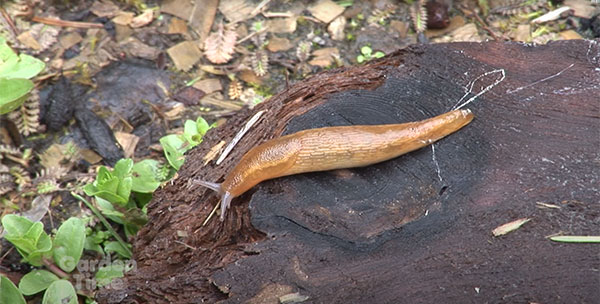
They are followed by spider mites later in the drier
parts of summer. They, too, can also be sprayed off if
you do it regularly. Spittle bugs are also on the list.
They are more of a nuisance and don’t do much damage to
your plants. The foam ‘spit’ protects them from the sun
and heat of summer. Just hose them off and, once on the
ground, they will dry up or become food for a predator.
Slugs are a pain for most gardeners in the Pacific
Northwest. Many of us encounter them in the spring, but
they can be a pest much of the year if conditions are
right. Summer is the time to keep an eye out for them
and treat if they become a problem. There are many types
of organic and synthetic solutions, so be sure to pick
the right one for your garden (phosphorus baits are good
and safe, especially if you have kids or pets). If we
have a huge rain or you are constantly watering your
garden, you may need to reapply often.
I had a question next which dealt with mosquitoes. How
can we control these buzzing pest from our evenings in
the garden? The key is to eliminate standing water,
which is where mosquitoes grow and breed. If you have a
fountain, the movement of the water discourages them
from breeding there. You can also add mosquito dunks to
standing ponds and birdbaths. This is a product that is
safe for wildlife, but prevents the larvae from forming
and growing. Some people also say that certain plants
can repel mosquitoes. These plants tend to be ones that
have fragrant foliage or flowers. Scented geraniums,
rosemary and marigolds are just a few of the plants that
are rumored to work well. However, the best scent is
obtained when the leaves are brushed or crushed, so you
need to be close enough to the plants to brush them to
release the scent. Jan said she needs to see more
research before she could recommend that as a viable
option. Speaking of small pests, we moved to ants. Ants
can take many forms, from the smaller ants you see on
your kitchen counters, to the larger winged varieties in
your garden. Jan told us that some of the winged types
of ants are just a natural progression when ant colonies
get too big. The newer generation forms wings which
allow them to fly off and establish colonies elsewhere.
The key is to know what type of ant you are dealing
with. They may be carpenter ants, but you would need to
identify them before you treat for them. The same is
true for termites. Capture a few and have then
identified by an expert so you will know if they are a
problem or not.
OSU Extension has this publication to help you. Ryan
then asked about box elder bugs. You have probably seen
these little pests on the warm side of your house. The
box elder bug is very active right now as it comes out
and gets ready to mate. The box elder is relatively
safe. They don’t eat the fabric on furniture, but they
may stain items with their excrement. We recommend not
spraying if you don’t have to. Pesticides will kill some
of the beneficial insects along with the box elder bug.
Instead, use a large vacuum to remove them or just sweep
them off the house or move them outside if they are in
your home. Be careful and use caution if you are going
to use a ladder to reach bugs on your eaves. Don’t
confuse these with the larger shield-looking Stink Bug.
If you are not sure of the difference, stop by your
local independent garden center.
We finished our discussion about summer garden pests
with yellowjackets. If you mention the word "yellowjacket,"
most people will shudder! The image most of us have is
of a nasty, mean, flying machine, that disrupts
gardening activities and outdoor dinners. They attack
even when they are not provoked and can ‘sting’ multiple
times! Jan told us that these little beasts do serve a
purpose: They are a beneficial bug! They can feed on
other insects in your garden. Caterpillars and other
soft bodied insects that eat your flowers and plants can
be part of a wasp's meal. They may even do a little
pollinating, too. Many times, a gardener will find them
nesting in the ground and with just one unlucky step you
can have a swarm attacking you. But you can also find
them building small nests above ground too. The
interesting thing we found out is that the colony will
die off every fall and winter. In the fall a new queen
is produced and she finds a place to winter over until
spring. We have found them in our woodpile during the
winter. In the spring the new queen wakes up and sets
off to find a new home and start a new colony. The
colony slowly builds and becomes larger, then will
become more aggressive as the summer season wraps up. If
a colony is far away, you shouldn’t need to worry, but
if they are close to your home, you may want to remove
them. To do that find a product that is specific to
wasps as you don’t want to remove any beneficial
(non-aggressive) bugs. Follow all directions for safe
application. Most of the time the product will have you
apply it to the nest at twilight when the wasps are
returning to the nest. This will ensure that you get
them all while they are in the nest for the night. For
more information including the differences between
Yellowjackets and Paper Wasps and how to get rid of
them,
check out this paper from OSU Extension.
After a quick break we returned to chat about diseases
in the summer garden. Jan talked about the importance of
knowing if you have a disease problem before you treat
it. For some problems, there may be no solution, or the
solution/treatment may have been earlier in the growth
cycle. The example of blossom end rot on tomatoes came
up. By the time you notice it, it is too late for a
treatment. The prevention of this problem was during
your planting of tomatoes. Adding a garden lime or
calcium to the planting hole can help prevent those ugly
black spots later in the season. The good news is that
you can just cut off the end rot and the tomato can
still be used. Jan recommended that you keep your plants
as healthy as possible, which includes watering them
well during the summer heat. Good watering will also
help your other garden plants. When you notice your
cucumbers curling or starting to taste bitter, that
could be a sign of uneven watering. Keep them moist
during the fruiting period to help prevent that.
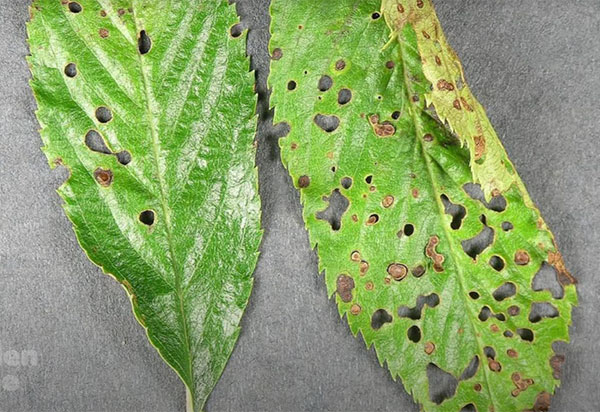
Ryan then asked about some flowering cherries that he
had seen. They looked great in the spring when they
flowered, but now they have tiny little holes all over
the leaves. Jan said that is "Shot Hole" disease. Once
you see the holes, there is not much you can do. If you
want to treat for it, you need to learn when to apply
the treatment and in what amount so you don’t do further
damage to pollinators or the tree. If you don’t have
holes in your leaves but are noticing wilting leaves,
especially on dogwoods, then you might have another
problem. It could be anthracnose. First, confirm the
problem and then treat. You can also help the plant by
fertilizing it and watering well. If you do have
problems with your trees, it would be worth the time and
money to have a certified arborist take a look at your
plants and recommend a course of action for treatment.
Judy then asked about roses. Roses are a favorite of the
summer garden. The right varieties will continue to
bloom all through the summer and into the fall. As with
any rose, there are thorns. For us that means diseases
and pests. The rose is the number one flowering plant in
the United States and we talked about a few of the four
problems gardeners face in the rose garden. We first
talked about Black Spot. This is a problem that you will
find in most rose gardens. It loves our cool, wet
climate and attacks the young tissue on your roses. You
have to start early in the season to prevent this
problem. Now is too late to try and stop it but you can
minimize it by taking the diseased material that falls
off the plant and putting it in your garbage, not your
compost pile. The spores from the diseased plants will
stay in your compost and if you spread it around, could
affect your other roses. We also talked about rust. This
pathogen likes a range of dry-to-wet conditions. In the
spring it will form when your plants get wet in the rain
and then dry, and back and forth. Then we talked about
the mildews, powdery and downy. Powdery mildew likes the
warm weather. The fungus really likes these conditions
and will thrive with overhead watering and lots of heat.
Downy mildew is harder to diagnose. A lot of people
think they have black spot when they really have downy
mildew. It invades the leaf from the underside (think
‘down’ as ‘under’) and it can look like black spot. How
do you prevent, or limit, these diseases? Good plant
care is one way. Prune the plants to allow for airflow
through the plant. This will allow the plant to dry
quickly and make it difficult for spores and fungus to
grow. Clean your pruners when you are working,
especially if you are going from one plant to another.
Try to minimize your overhead watering. Use a soaker
hose instead. This will get the water to the plants and
keep the foliage dry, preventing those disease problems.
You can also look to replace your disease prone flowers
with newer disease-resistant varieties.
We then switched to chatting about conifers and needle
drop. Some people may notice that some of their conifers
are starting to look a little dead. The inside of the
tree may be filled with brown needles and dry foliage.
This is nothing to be alarmed about. As your tree gets
older it will shed some of the needles that are no
longer being used. You should look at the tips of the
plant. Check for new growth. If you don’t see any new
growth or there are large patches of brown or branches
that are entirely dead you should contact a certified
arborist.
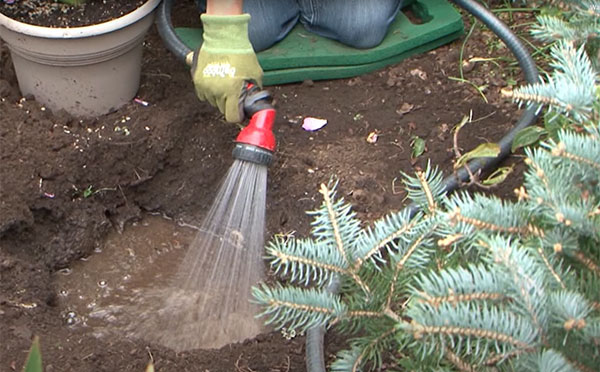
The summer can also be a time for planting. If you do
plant in the summer heat, here is a technique for
planting that reduces the transplant stress when you are
moving plants in your garden. After you dig your hole
and add amendments, but before you plant your new plant
you should fill the hole with water. Then put your plant
in the hole. This allows those roots and the entire root
ball to get a good soaking. If you just planted the
plant in the dry soil it increases the amount of shock
the plant goes through. This helps take care of that.
After letting the plant sit in the water for a few
minutes, feel free to backfill the rest of the soil in
the hole and finish by giving your plant one last drink
to help settle the last soil you used. If you are
planting on a very hot day, Jan also recommended that
you plant in the early morning or later in the day to
reduce the stress even more.
As we approached the end of our conversation we talked
about a few more tips on watering, which reminded Jan
about a problem that she thought was related to
watering. She had a rose that was not responding to
water and it was starting to wilt. She found out that
voles had dug tunnels through the roots and so the water
wasn’t getting to the roots at all. Sometimes you have
to do a little digging to find the ‘root’ of the
problem!
Another thing that you might notice in the garden are
flower heads on your vegetables. This is known as
bolting which is the plant going to seed. It has decided
that the time is right to stop growing and time to
spread seed. You can delay the seeding and get more from
your plant if you snap off the seed head.
Finally, we talked about getting your fall crops growing
by planting them in the mid- to late summer. We started
with cole crops. A lot of people call them ‘COLD’ crops,
but cole refers to plants in the Brassica family
including broccoli, cauliflower, cabbages, kales and
Brussel Sprouts. These can be planted in the ground
during the warm days of late summer. They will love the
late summer heat and because they can handle the colder
soils and outdoor temperatures of fall and winter, they
can be harvested when the rest of your garden is going
to sleep for the season. If you have any questions about
growing vegetables, please
check out this great publication from Oregon State
Extension called Growing Your Own; A Practical Guide to
Gardening in Oregon.
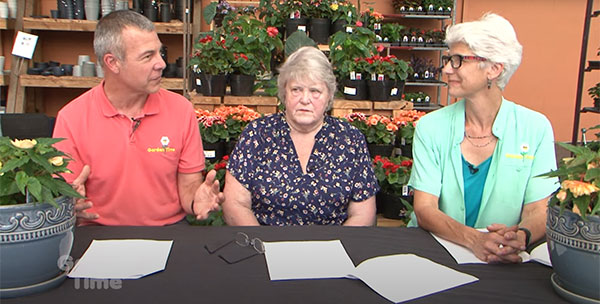
The last thought from our crew is to encourage people to
get out in their garden and enjoy all the hard work you
have put into your plants. If you need any more
information about gardening you can always
check out the OSU Extension website.

PODCASTS
2022
• Return to Current Year Podcast List
 |